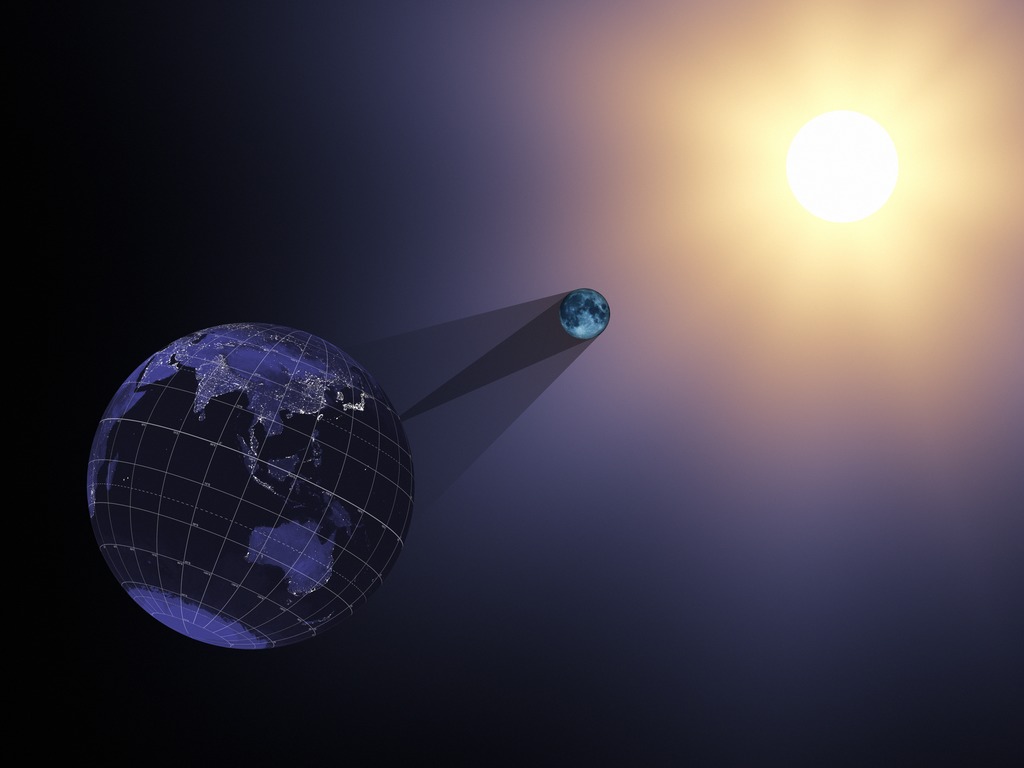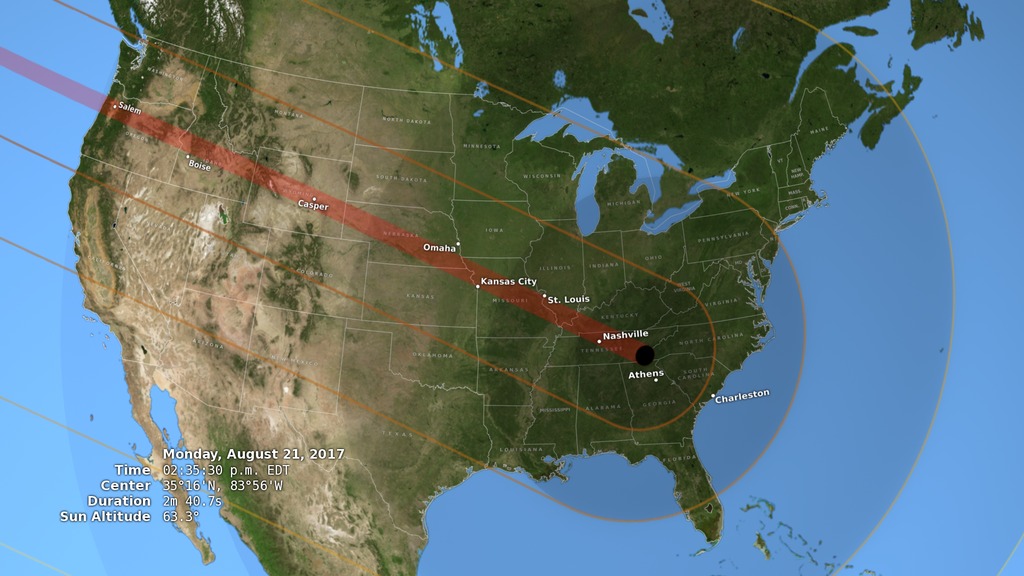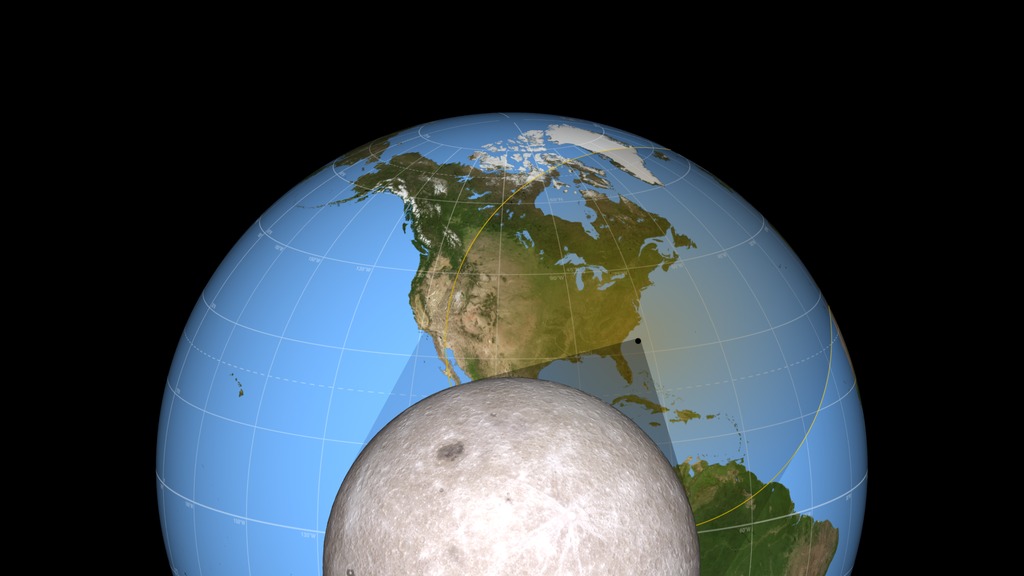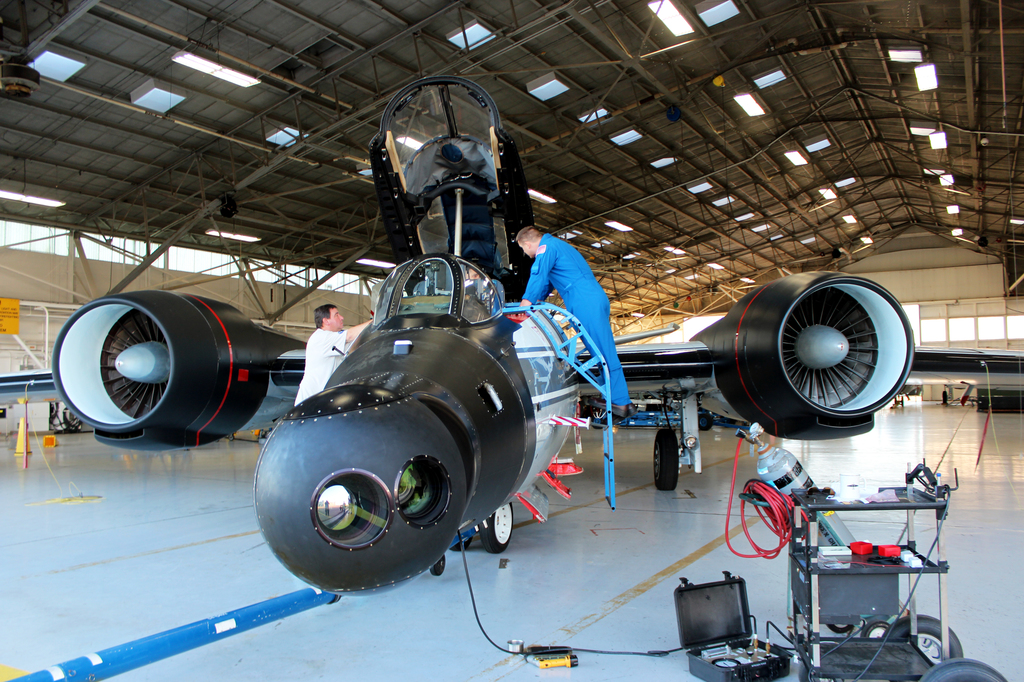2017 Solar Eclipse from L1
The August 21, 2017 total solar eclipse as seen from a satellite in orbit around L1, a point about 1.5 million kilometers from Earth in the direction of the Sun.
A number of satellites will be watching the August 21, 2017 total solar eclipse from space. One of them, the Deep Space Climate Observatory (DSCOVR) will see the eclipse from its orbit around L1, the Lagrange point located about 1.5 million kilometers from Earth along the Earth-Sun line. From this vantage point, DSCOVR's EPIC camera continuously images the full sunlit disk of the Earth.
This animation simulates the view that EPIC will have of the 2017 eclipse. The shadow size and opacity are based on the eclipse obscuration, the fraction of the Sun's disk covered by the Moon. The bright spot near the equator is the reflection of the Sun on the water. The red streak shows the path of totality, the locations on the Earth where observers will see the Sun completely covered by the Moon.
EPIC will see both the Moon's shadow and the Sun's reflection because DSCOVR's orbit takes it several degrees off both the Sun-Earth line and the Sun-Moon line. For the same reason, the Moon will not be in the frame. The animation places the virtual camera in a plausible
position for DSCOVR. The actual position of the spacecraft at the time of the eclipse will be affected by adjustments to its orbit that may be made in the coming months.
EPIC has already captured the total solar eclipse of March, 2016.
Credits
Please give credit for this item to:
NASA's Scientific Visualization Studio
-
Visualizer
- Ernie Wright (USRA)
-
Scientist
- Madhulika Guhathakurta (NASA/HQ)
Release date
This page was originally published on Monday, May 23, 2016.
This page was last updated on Monday, July 15, 2024 at 12:04 AM EDT.
Series
This visualization can be found in the following series:Datasets used in this visualization
-
BMNG (Blue Marble: Next Generation) [Terra and Aqua: MODIS]
ID: 508Credit: The Blue Marble data is courtesy of Reto Stockli (NASA/GSFC).
This dataset can be found at: http://earthobservatory.nasa.gov/Newsroom/BlueMarble/
See all pages that use this dataset -
DE421 (JPL DE421)
ID: 752Planetary ephemerides
This dataset can be found at: http://ssd.jpl.nasa.gov/?ephemerides#planets
See all pages that use this dataset
Note: While we identify the data sets used in these visualizations, we do not store any further details, nor the data sets themselves on our site.




![Music: Dawn Drone by Juan Jose Alba Gomez [SGAE]Complete transcript available.](/vis/a010000/a012600/a012669/LARGE_MP4-EPICEclipse_Rescript_large.00696_print.jpg)